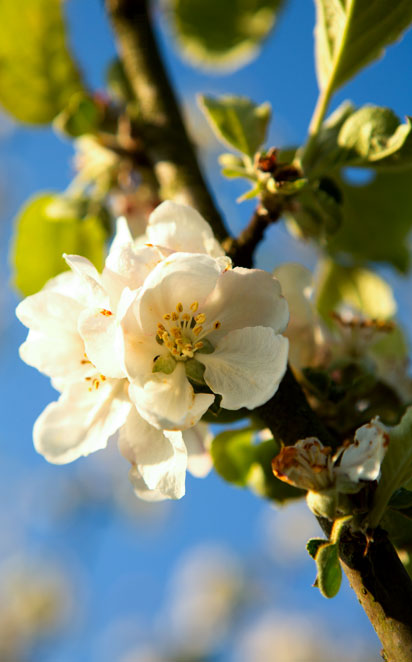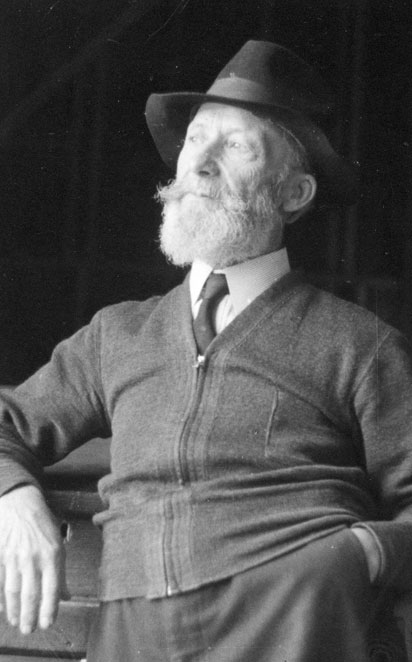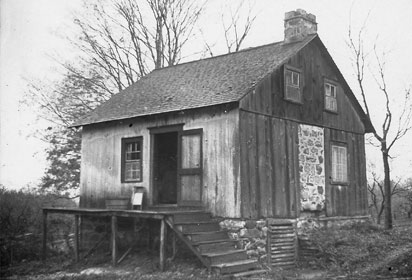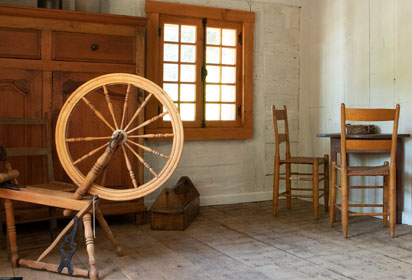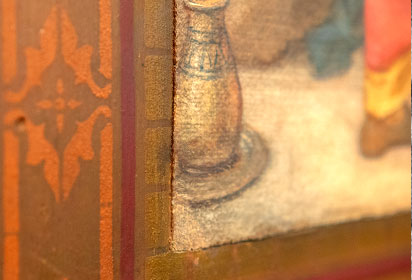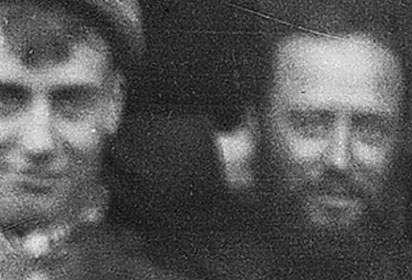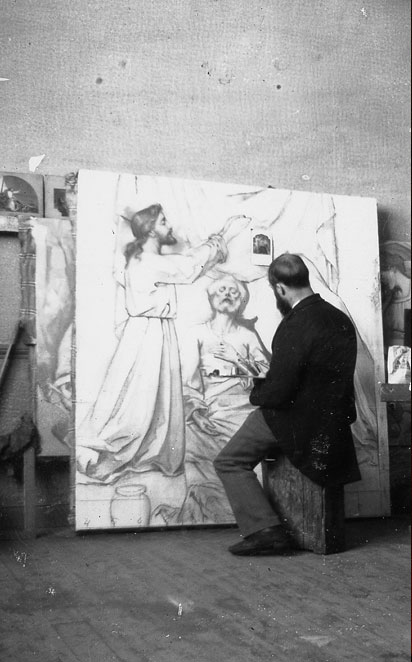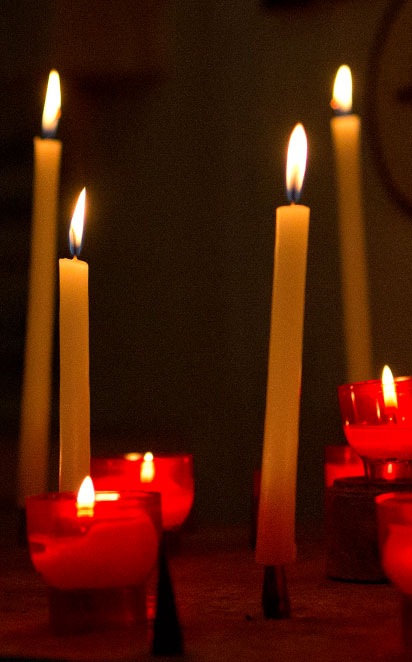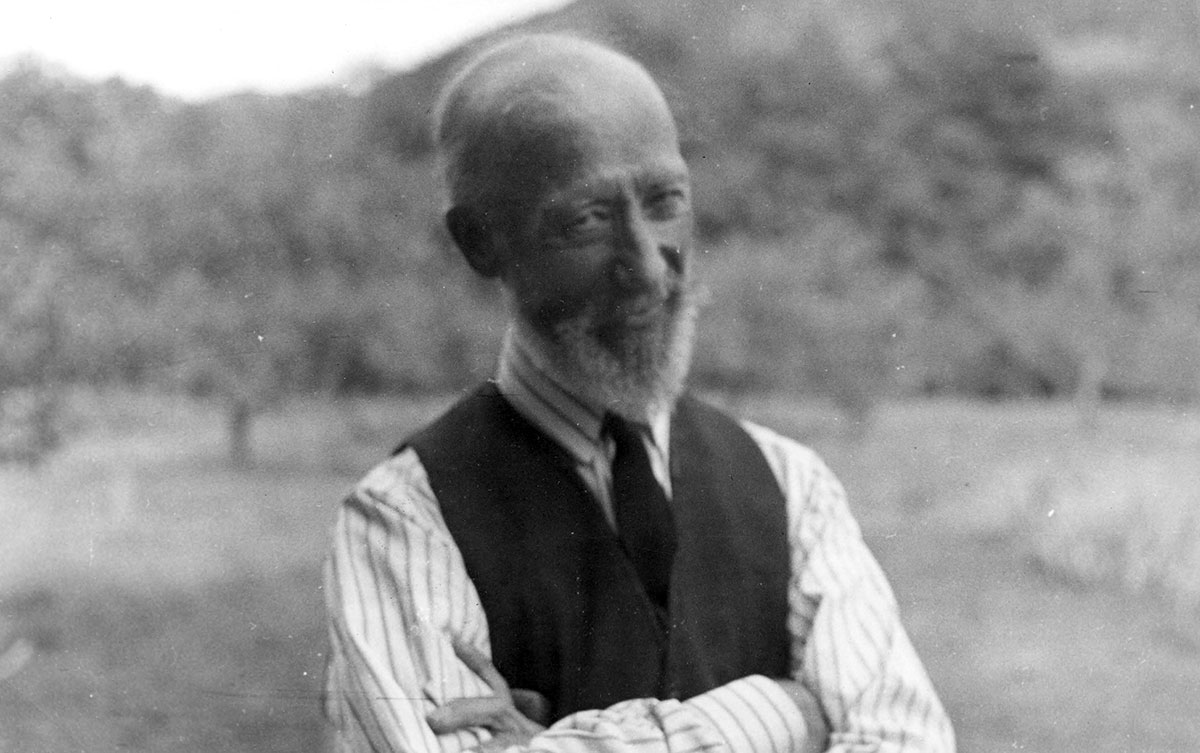Presentation
The wise man of the mountain
Download in WebM format (11,8 Mb)
Download in MP4 format (12,8 Mb)
Ozias Leduc (1864 - 1955)
Ozias Leduc is a major figure of 20th century Canadian art. He was born in Saint-Hilaire on October 8, 1864 and lived there all his life. He tirelessly sought an ideal of beauty. A native of Montérégie, he was surrounded by abundant and lush nature.
Son of a carpenter and apple grower, he starts learning drawing and basic artistic skills at the age of sixteen, encouraged by his teacher Jean-Baptiste-Nectaire Galipeau. Over the years, his attachment to St-Hilaire's mountain, its orchards and surrounding countryside continues to grow. From a very young age, this peaceful environment marks his life and profoundly influences his work.
Ozias Leduc is first and foremost a church decorator. He trains with painters such as Luigi Capello (an italian artist, born in Turin in 1843) and Adolphe Rho (painter and sculptor from Quebec, born in 1839). He then pursues his apprenticeship by copying etchings and various art reproductions. During his career, Leduc painted numerous murals in many churches of the province of Quebec, the Maritimes and New England. The decoration of the church of Saint-Hilaire is one of his most important masterpieces.
For Ozias Leduc, art is imbued with certain laws that govern humanity and the universe that surrounds it. His contemporaries recognized the quality of his portraits, his landscapes and his still lifes. An indefatigable artist, he died in 1955 in Saint-Hyacinthe at the age of ninety, just before completing one of his last works, the decoration of the Notre-Dame-de-la-Presentation church in Shawinigan.
Virtual exhibition's main sections
Here is a description of this website's main themes:
An inspired artist
We'll explore in this section how his sisters, friends or even "Mountain Fairies" become at one time or another an inspiration or reference for his work. We'll also see in which way qualities and precepts of European Masters are integrated in his art.
In Heaven and on Earth
An important church decorator, Leduc worked on 31 projects in Quebec, the Maritimes and New England. This section shows his spiritual sensitivity as well as his pragmatism in the creation of these projects, where inspiration and discipline live in perfect harmony.
Places of the heart
The village of Saint-Hilaire, the artist's birthplace, is the starting point that shows the importance of his living environment. A visit to the places of his life allows us to better understand his unique journey, combining rurality and spirituality.
Life's moments
The life and work of Ozias Leduc is marked by important milestones. From his youth to his greatest achievements, we'll witness the various stages of the artist's journey.
A closer look
As an artist who is both educated and profoundly attached to nature, Ozias Leduc draws his inspiration from his loved ones, his environment and his faith. We'll discover in this section his techniques, artistic approaches and various contexts of creation.



